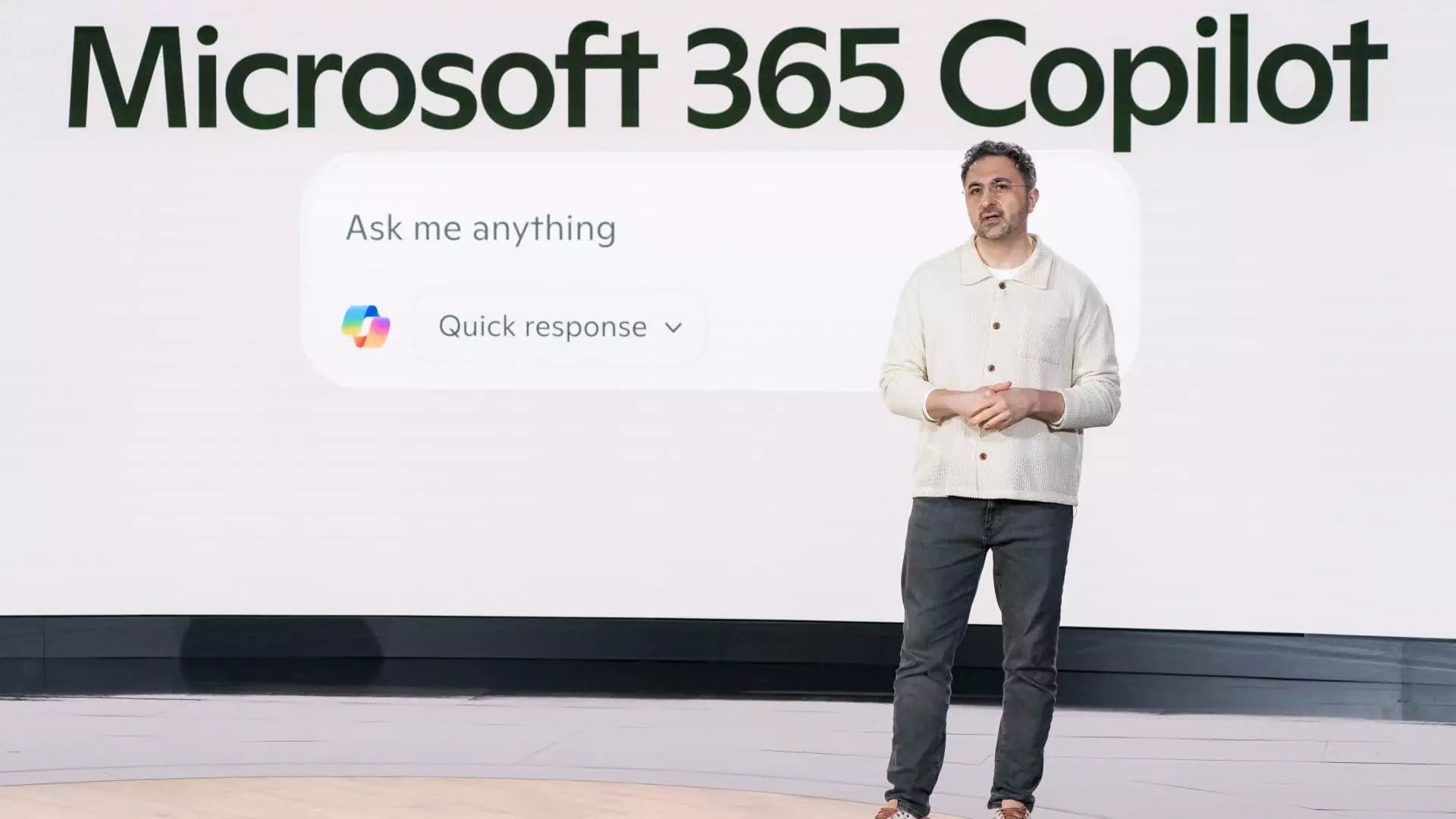In the high-stakes world of artificial intelligence, where the race for supremacy is often painted as a battle between cutting-edge technological marvels, Microsoft is taking an unexpected route. Unlike many of its rivals, it is not rushing to utilize its extensive holdings of Nvidia graphics processing units (GPUs) for developing groundbreaking AI models. This choice may seem counterintuitive; however, it reveals a thoughtful strategy shaped by the evolving nature of AI development. Mustafa Suleyman, Microsoft’s head of AI, recently articulated this perspective, suggesting that there are substantial advantages to not being on the frontrunner’s bleeding edge.
Suleyman’s argument hinges on the economic benefits of waiting—specifically, delaying model development by several months to capitalize on lessons learned by those leading the charge. In a field marked by rapid advancements and expensive experiments, “off-frontier” strategies allow Microsoft to save costs and focus on specific, high-impact use cases. In his words, “It’s cheaper to give a specific answer,” when the initial models have already paved the way and exposed practical challenges. This careful positioning may well be a testament to a more sustainable approach in an industry often derailed by hype and urgency.
The Influence of Partnerships in AI Development
Suleyman’s background as a co-founder of DeepMind—a prominent AI lab purchased by Google—fuels his perspective on the necessity of building robust collaborations. Under Suleyman’s leadership, Microsoft has strategically aligned itself with OpenAI and other tech players, recognizing that the strength of its AI capabilities lies not only in its internal resources but also in the partnerships it forges. Microsoft’s investment of $13.75 billion in OpenAI exemplifies this belief, but cracks in the partnership have begun to show. With OpenAI exploring relationships with other cloud providers like Oracle, Microsoft’s future in this competitive landscape may hinge on balancing collaboration with self-reliance.
Rather than cast OpenAI as a direct competitor, Suleyman emphasizes a long-term vision for AI’s development at Microsoft, suggesting a dual strategy that includes building proprietary capacities while maintaining existing partnerships. However, this raises urgent questions about the reliability of these alliances. As the AI sector matures, the very partnerships that once seemed beneficent might transform into competing interests, complicating Microsoft’s position in a market defined by overlap and convergence.
The Evolution of AI in Microsoft Products
Reflecting on the way Microsoft integrates AI into its existing ecosystem is crucial for understanding the broader implications of its strategy. The incorporation of AI enhancements into products like Bing and Windows signifies a commitment to user-oriented innovations rather than merely flexing technological might. With features such as the upcoming “memory” capability for Copilot, which allows the assistant to learn and retain critical user information, Microsoft seems intent on creating a more personalized user experience. This strategic focus on functionality over sheer power is indicative of a company that values practical applications over technological spectacle.
Furthermore, the shift towards open-source small-language models diverges from the path set by larger, high-performance systems like OpenAI’s offerings. By making it easier for regular PC users to access AI capabilities, Microsoft positions itself as a more inclusive player in the AI landscape—one that empowers mainstream users rather than catering solely to enterprise-level demands. This approach has the potential to democratize AI, enabling a broader audience to benefit from advances that were previously restricted to those with vast resources.
The Risks of Prioritizing Frontier Models
While there’s an undeniable allure in the quest for the “best model in the world first,” Suleyman’s stance against this relentless pursuit bears significant weight. The pressure to be first can lead to a culture of desperation and technological recklessness, where the risks of failure soar, and the cost of mistakes becomes unsustainable. By drawing back and adopting a methodical approach, Microsoft may not just be conserving resources but also fostering a culture of resilience within its AI endeavors.
In a field crowded with feverish competition, Microsoft’s calm, collected approach could serve as a beacon for other corporate giants wrestling with the chaos of innovation. The temptation to leap into cutting-edge research without a measured plan is powerful, and it can engender destructive cycles of overinvestment in projects that fail to deliver practical results. Consequently, as competitors scramble to be the first to produce the next AI marvel, Microsoft’s strategy of well-timed algorithm deployments gives it a formidable edge that is less about speed and more about staying the course.
In a rapidly evolving technological arena, Microsoft’s grounded strategy could ultimately lead to more meaningful advancements that serve actual user needs, standing in stark contrast to the frenzied pursuit of immediate vanity metrics.

